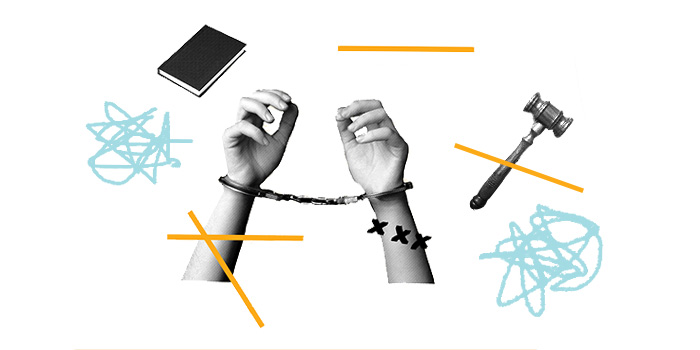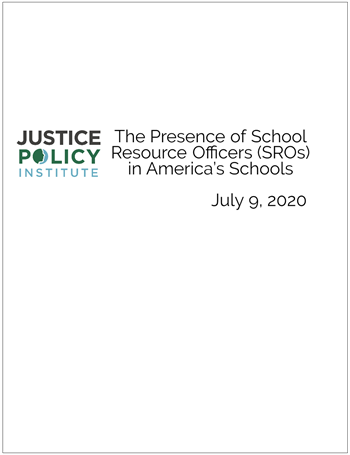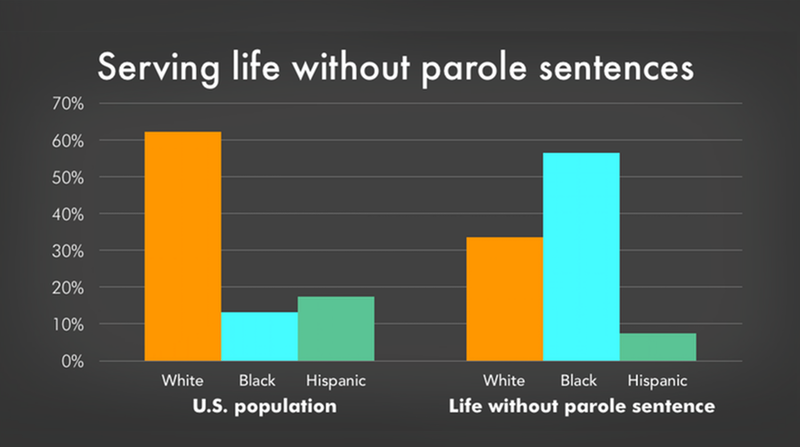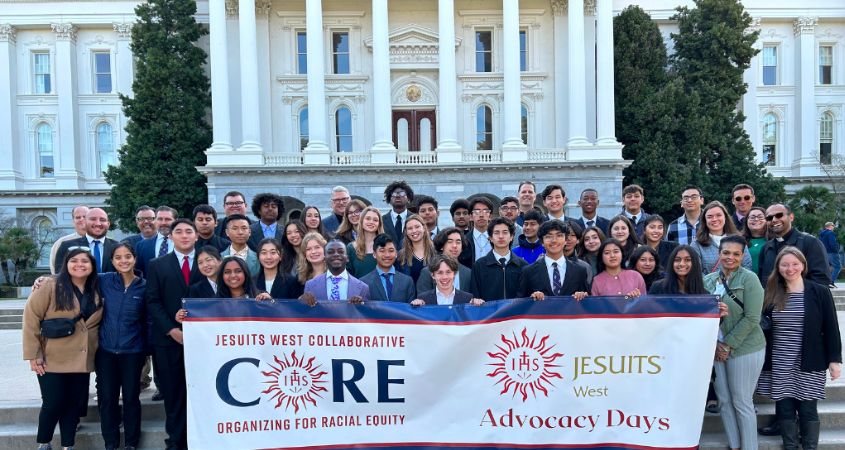Table of Contents
- What Is the School-to-Prison Pipeline?
- The Factors at Play
- Zero-Tolerance Policies
- Excessive Use of Suspensions and Expulsions
- School Resource Officers (SROs)
- Racial Disparities
- Impact on American Youth
- Academic Disruption
- Increased Likelihood of Incarceration
- Long-Term Consequences
- Restorative Justice Programs
- Mental Health Support
- Training and Awareness
- Policy Changes
- Building a Path to Educational Equity
The “School-to-Prison Pipeline” is a deeply concerning phenomenon that has garnered increasing attention in the United States. It refers to the alarming trend where students, particularly those from marginalized communities, are funneled from schools into the criminal justice system, often resulting in long-term negative consequences for their lives. In this article, we will explore the intricacies of the School-to-Prison Pipeline, its impact on American youth, and the urgent need for reform.
The “School-to-Prison Pipeline” is a deeply concerning and complex issue that has gained significant recognition and concern in the United States. This distressing phenomenon describes a troubling pattern where students, particularly those hailing from marginalized communities, are increasingly channeled from schools directly into the criminal justice system. This alarming trajectory has far-reaching and often devastating consequences for the lives of these young individuals. In this article, we embark on a journey to delve deeper into the intricacies of the School-to-Prison Pipeline, understanding the profound impact it has on American youth, and highlighting the urgent need for comprehensive reform.
1. Disproportionate Impact: One of the most disturbing aspects of the School-to-Prison Pipeline is its disproportionate impact on minority and marginalized communities. Students of color, those with disabilities, and those from low-income backgrounds are disproportionately affected. This systemic inequality exacerbates existing disparities in the justice system, perpetuating cycles of disadvantage.
2. Factors Fueling the Pipeline: The pipeline is fueled by various interconnected factors, including zero-tolerance policies, harsh disciplinary measures, and the presence of law enforcement in schools. Minor infractions that would traditionally be handled within the school system are often escalated to law enforcement, contributing to the criminalization of student behavior.
3. Long-term Consequences: Once a student is funneled into the criminal justice system, the consequences can be profound and long-lasting. This includes a criminal record that can hinder future educational and employment opportunities, as well as the potential for incarceration that can lead to a cycle of involvement with the justice system.
4. Lost Educational Opportunities: The pipeline disrupts the education of affected students. Instead of receiving support and resources to address underlying issues, they often find themselves excluded from the educational environment. This exacerbates their academic struggles and diminishes their prospects for future success.
5. Need for Restorative Justice: Advocates for reform emphasize the importance of adopting restorative justice practices within schools. These approaches prioritize healing and reconciliation over punitive measures, encouraging students to take responsibility for their actions and make amends, rather than facing harsh disciplinary consequences.
6. Policy Reform: Comprehensive policy reform at the federal, state, and local levels is essential to addressing the School-to-Prison Pipeline. This includes reevaluating zero-tolerance policies, increasing transparency in disciplinary practices, and redirecting funding from law enforcement to support services within schools.
7. Community Involvement: Engaging communities in discussions and decision-making regarding school disciplinary policies is crucial. Empowering parents, teachers, students, and community leaders to have a voice in shaping these policies can help ensure that they are equitable and just.
8. Holistic Support: Implementing comprehensive support systems within schools is essential to addressing the underlying issues that often lead to disciplinary problems. This includes mental health services, counseling, and resources for students facing challenges at home or in their communities.
In conclusion, the School-to-Prison Pipeline is a deeply concerning issue that demands our attention, empathy, and action. It not only perpetuates systemic inequalities but also robs young individuals of their potential and future opportunities. By understanding its complexities, advocating for reform, and prioritizing the well-being of our youth, we can collectively work towards dismantling this harmful pipeline and creating a more equitable and just educational system for all students.
Additionally, you can find further information on this topic by visiting this page: School-to-Prison Pipeline | American Civil Liberties Union
What Is the School-to-Prison Pipeline?
The School-to-Prison Pipeline represents a series of policies and practices within the education and criminal justice systems that result in students, especially students of color, becoming enmeshed in the juvenile and criminal justice systems. Rather than addressing behavioral issues through supportive and rehabilitative measures, schools often resort to punitive actions that set young individuals on a trajectory toward incarceration.
The School-to-Prison Pipeline is a deeply troubling issue that reflects the intersection of education and criminal justice systems in a way that disproportionately affects marginalized communities, particularly students of color. It is a systemic problem that requires urgent attention and reform.
At the heart of this pipeline is the failure to address behavioral issues in a constructive and supportive manner within our educational institutions. Instead of employing methods that prioritize rehabilitation and personal growth, schools often resort to punitive measures such as suspensions, expulsions, or even involving law enforcement for minor infractions. These harsh consequences not only disrupt a student’s education but also set them on a perilous path towards involvement in the juvenile and criminal justice systems.
The consequences of this pipeline are far-reaching. Once students are pushed out of the educational system, they are more likely to face a range of negative outcomes, including academic failure, social isolation, and disconnection from positive role models and support structures. These factors can lead to a higher likelihood of engaging in delinquent behaviors and ultimately entering the criminal justice system.
To dismantle the School-to-Prison Pipeline, a multi-pronged approach is necessary. First and foremost, there must be a fundamental shift in the way schools handle behavioral issues. Restorative justice practices, counseling, and support services should take precedence over punitive actions. Schools should be safe spaces where students can learn from their mistakes and grow, rather than environments that push them into a cycle of punishment.
Equity in education is another critical aspect of addressing this issue. Students from marginalized backgrounds often face disparities in access to quality education, experienced teachers, and appropriate resources. By addressing these disparities, we can mitigate some of the factors that contribute to behavioral issues in the first place.
Additionally, training for educators and school staff in recognizing and addressing the effects of trauma, particularly in communities with high rates of poverty and violence, is crucial. Trauma-informed approaches can help create a more empathetic and supportive environment for students, reducing the likelihood of punitive measures.
Ultimately, the School-to-Prison Pipeline highlights the urgent need for comprehensive reform in both our educational and criminal justice systems. It’s a call to action to prioritize the welfare and potential of our youth over punitive measures, ensuring that all students, regardless of their background, have the opportunity to thrive and contribute positively to society.
You can also read more about this here: Who is Most Affected by the School-to-Prison Pipeline

The Factors at Play
Several factors contribute to the existence and persistence of the School-to-Prison Pipeline:
nullDon’t stop here; you can continue your exploration by following this link for more details: School-to-Prison Pipeline | American Civil Liberties Union

Zero-Tolerance Policies
Many schools have adopted zero-tolerance policies that mandate severe punishment for any infraction, regardless of its nature or severity.
The adoption of zero-tolerance policies in many schools across the United States has been a contentious issue that warrants closer examination. These policies, which require strict and uniform punishment for any infraction, have raised concerns due to their implications for student well-being and the overall educational environment.
One of the key criticisms of zero-tolerance policies is their lack of nuance. By mandating severe consequences for any rule violation, regardless of the nature or severity of the infraction, these policies do not take into account the unique circumstances or intentions behind students’ actions. This one-size-fits-all approach often results in disproportionate and unfair punishments, where minor infractions can lead to harsh consequences such as suspension or expulsion. This not only disrupts students’ education but also perpetuates a cycle of exclusion and alienation.
Moreover, zero-tolerance policies can have a detrimental impact on marginalized and minority students. Research has shown that these policies disproportionately affect students of color and those with disabilities. Inadvertently, they contribute to the school-to-prison pipeline, pushing students into the juvenile justice system rather than addressing underlying issues or providing support.
The punitive nature of zero-tolerance policies can also hinder the development of conflict resolution and problem-solving skills among students. Instead of teaching them how to make amends, understand consequences, and grow from their mistakes, these policies opt for punitive measures that may not align with the principles of restorative justice or effective discipline.
In contrast, some argue that zero-tolerance policies create a sense of discipline and order within schools, deterring potential rule violations. However, research suggests that a punitive approach does not necessarily lead to a safer or more respectful school environment. Instead, it may foster resentment and mistrust between students and administrators.
Alternatives to zero-tolerance policies include implementing restorative justice practices, counseling, and conflict resolution programs. These approaches focus on addressing the root causes of misbehavior, repairing harm, and fostering a sense of responsibility among students. By prioritizing understanding and rehabilitation over punishment, schools can create a more supportive and inclusive learning environment.
In conclusion, the adoption of zero-tolerance policies in schools has sparked debates about their effectiveness and impact on students. While the intention may be to maintain discipline and order, the rigid nature of these policies often leads to unintended consequences, including disproportionate punishment and the exclusion of marginalized students. Exploring alternative approaches that prioritize understanding, growth, and restorative justice can lead to more positive outcomes and a healthier educational atmosphere.
Additionally, you can find further information on this topic by visiting this page: Exploring the School-to-Prison Pipeline: How School Suspensions …

Excessive Use of Suspensions and Expulsions
Students are frequently suspended or expelled for non-violent or minor infractions, causing them to miss valuable instructional time and increasing the likelihood of disengagement from school.
Students are frequently suspended or expelled for non-violent or minor infractions, such as tardiness, dress code violations, or verbal disputes. While these infractions may not warrant such severe consequences, the punitive measures employed by some schools have a ripple effect that extends beyond the immediate punishment.
Lost Educational Opportunities: When students are suspended or expelled, they miss valuable instructional time. For some students, this means falling behind in their coursework and struggling to catch up. It can lead to gaps in their education and hinder their academic progress.
Disengagement from School: Experiencing suspension or expulsion can make students feel disconnected from their school community. They may perceive it as a sign of rejection or punishment, which can erode their sense of belonging and motivation to succeed academically.
Increased Risk of Future Misbehavior: Paradoxically, punitive discipline measures can sometimes lead to an increased likelihood of future misbehavior. When students are excluded from school, they may be more likely to associate with peers who engage in risky behaviors or disengage from pro-social activities, further entrenching them in a cycle of disciplinary issues.
Negative Impact on Mental Health: The stress and stigma associated with suspension or expulsion can take a toll on students’ mental health. It may lead to feelings of shame, frustration, and alienation, which can affect their overall well-being and ability to focus on learning.
Contributing to the Pipeline: For some students, suspension or expulsion can be the first step into the School-to-Prison Pipeline. When students are pushed out of the school environment, they may become more vulnerable to involvement with the criminal justice system, perpetuating the cycle of incarceration.
Disproportionate Impact on Marginalized Groups: It’s important to note that the impact of punitive discipline is often felt disproportionately by students from marginalized communities, including Black and Hispanic students. This exacerbates existing disparities in educational outcomes and opportunities.
To address these issues, it is essential to shift away from punitive disciplinary measures and adopt more restorative and supportive approaches within schools. This could involve implementing restorative justice programs, providing counseling and mental health services, and focusing on positive behavior interventions rather than exclusionary practices. By doing so, schools can create a more inclusive and equitable learning environment that supports the well-being and success of all students.
Explore this link for a more extensive examination of the topic: Civil-Rights and-the-School-to-Prison-Pipeline-in Indiana.pdf

School Resource Officers (SROs)
The presence of law enforcement officers in schools can lead to the criminalization of student misbehavior, turning disciplinary matters into criminal cases.
The introduction of law enforcement officers into educational environments was initially intended to enhance school safety and protect students and staff from potential threats. However, an unintended consequence of this presence has been the potential for the criminalization of student misbehavior, a troubling trend that requires careful consideration.
In the pursuit of creating secure learning environments, some schools have adopted a zero-tolerance approach to discipline. This approach, while well-intentioned, can sometimes result in a disproportionate response to relatively minor infractions. Students who may have once received detentions or counseling for their misbehavior may now find themselves facing criminal charges instead. This shift can have serious, life-altering consequences for young individuals.
One of the key concerns is that the presence of law enforcement officers can escalate what would otherwise be routine disciplinary matters. A student who engages in a minor scuffle or uses inappropriate language may find themselves in a situation where they are handcuffed, detained, and potentially even arrested. This escalation not only disrupts the learning environment but can also scar a student’s record and future prospects.
The criminalization of student misbehavior can have particularly troubling consequences for marginalized communities. Research has shown that students of color and those with disabilities are disproportionately affected by this trend. They may be more likely to face severe disciplinary actions, including arrests, which can further exacerbate existing disparities in the criminal justice system.
Furthermore, this approach diverts valuable resources away from educational and support services. Schools end up allocating funds and personnel to manage law enforcement functions that might be better directed toward counseling, mental health services, and conflict resolution programs. These resources could address the root causes of student misbehavior and promote a more supportive and nurturing school environment.
Addressing the issue of the criminalization of student misbehavior requires a thoughtful and balanced approach. Schools must prioritize restorative justice practices that focus on resolving conflicts and repairing harm rather than punitive measures. Additionally, clear guidelines for when and how law enforcement should be involved in disciplinary matters should be established to prevent excessive force or unnecessary legal action.
Ultimately, the goal of any educational system should be to create a safe and inclusive environment where students can learn and grow. The presence of law enforcement officers can indeed contribute to safety, but it must be accompanied by a commitment to fairness, equity, and a holistic approach to addressing student misbehavior that prioritizes their well-being and future success.
To delve further into this matter, we encourage you to check out the additional resources provided here: The school-to-prison pipeline, explained – Vox

Racial Disparities
Students of color, particularly Black students, are disproportionately affected by the pipeline due to racial bias in school discipline practices.
nullDon’t stop here; you can continue your exploration by following this link for more details: Guiding Principles for Creating Safe, Inclusive, Supportive, and Fair …

Impact on American Youth
The School-to-Prison Pipeline has profound and lasting consequences for the affected youth:
The School-to-Prison Pipeline has profound and lasting consequences for the affected youth, echoing through their lives in ways that extend far beyond the classroom and the criminal justice system. This insidious phenomenon is not merely a series of disconnected events but a complex web of policies, practices, and societal attitudes that disproportionately target marginalized communities, particularly students of color and those from low-income backgrounds.
Eroding Educational Opportunities: The first ripple effect is felt within the educational sphere itself. Students who are funneled into the pipeline often experience disruptions in their schooling due to suspensions, expulsions, or involvement with the criminal justice system. These interruptions in their education can lead to academic gaps, making it difficult for them to catch up and excel academically.
Negative Psychological Impact: The psychological toll on affected youth is substantial. Constant exposure to harsh disciplinary measures and the stigma of being labeled as “troubled” can result in anxiety, depression, and a diminished sense of self-worth. These emotional scars can persist into adulthood, affecting their mental health and overall well-being.
Entrenching the Cycle of Poverty: Once caught in the School-to-Prison Pipeline, it becomes increasingly challenging for these young individuals to escape the cycle of poverty. Criminal records, even for minor offenses, can limit future job prospects and access to housing and educational opportunities. This can perpetuate the very conditions that led them into the pipeline in the first place.
Loss of Trust in Authority: The pipeline erodes trust in authority figures, such as teachers, administrators, and law enforcement. When students perceive that the system is biased against them, it fosters resentment and a sense of alienation from society. This breakdown in trust can have long-lasting effects on their ability to engage constructively in their communities.
Higher Likelihood of Recidivism: For those who end up in the juvenile or criminal justice system, the risk of recidivism is significantly higher. Instead of addressing the root causes of their behavior, the system often exacerbates their problems by exposing them to more serious offenders and providing limited rehabilitation and support services.
Family and Community Impact: The consequences of the School-to-Prison Pipeline extend beyond the individual. Families and communities are also deeply affected. Families may experience the financial strain of legal fees and lost income due to incarceration. Communities, particularly those with high rates of pipeline involvement, suffer from the loss of their youth’s potential contributions to society.
Social Injustice and Inequality: The pipeline reflects and perpetuates broader social injustices and inequalities. It highlights systemic racism and socioeconomic disparities that persist in the education and criminal justice systems. Addressing the pipeline is not just about helping individual youth but also about dismantling these larger systems of oppression.
In sum, the School-to-Prison Pipeline is a multifaceted issue with far-reaching and long-lasting consequences. To break this cycle of despair, it is essential to implement comprehensive reforms that focus on prevention, restorative justice, and support for at-risk youth. By addressing the root causes and dismantling the structures that feed into this pipeline, we can pave the way for a more equitable and just society, where every young person has the opportunity to thrive and contribute positively to their community.
Looking for more insights? You’ll find them right here in our extended coverage: Exploring the School-to-Prison Pipeline: How School Suspensions …

Academic Disruption
Frequent suspensions and expulsions disrupt students’ education, making it difficult for them to catch up and stay engaged in school.
Frequent suspensions and expulsions disrupt students’ education, casting a long shadow over their academic journey and presenting significant challenges in their quest for knowledge and personal development. These punitive measures, while often intended to maintain order and discipline within educational institutions, can have unintended and far-reaching consequences that extend well beyond the immediate period of suspension or expulsion.
One of the primary consequences of these disciplinary actions is the interruption of a student’s learning process. When students are removed from the classroom, they miss out on valuable instructional time. This absence can create gaps in their understanding of the curriculum, making it difficult for them to catch up and keep pace with their peers. Over time, these educational gaps can accumulate, leading to feelings of frustration and alienation from the school environment.
Moreover, the disruptive nature of suspensions and expulsions can erode a student’s sense of belonging and engagement in the school community. Being excluded from regular classroom activities and social interactions can leave students feeling isolated and stigmatized. This sense of disconnection can lead to disengagement from school, with some students disheartened or disillusioned about the value of their education.
Another consequence is the potential for a negative feedback loop to develop. When students fall behind due to frequent suspensions or expulsions, they may become more prone to behavioral issues or academic struggles. This can, in turn, increase the likelihood of further disciplinary actions, perpetuating a cycle that becomes increasingly difficult to break.
Furthermore, the impact of suspensions and expulsions is not limited to academics; it also affects the social and emotional well-being of students. The stress and uncertainty associated with disciplinary actions can lead to heightened anxiety and a sense of injustice. Students may develop negative attitudes towards authority figures and institutions, which can have lasting effects on their behavior and attitudes.
To address these challenges, it is essential to consider alternative approaches to discipline that prioritize the educational and emotional well-being of students. Restorative justice practices, for example, focus on repairing harm and building positive relationships within the school community rather than punitive measures. Counseling and support services can help students address underlying issues that contribute to behavioral problems.
In conclusion, the disruption caused by frequent suspensions and expulsions has a profound impact on students’ education and overall well-being. It is imperative for educational institutions to strike a balance between maintaining discipline and creating an environment where students can learn, grow, and thrive. By adopting more compassionate and restorative approaches to discipline, we can better support students on their educational journeys and help them stay engaged in school.
You can also read more about this here: School-to-Prison Pipeline | American Civil Liberties Union

Increased Likelihood of Incarceration
Students who become involved in the juvenile justice system are more likely to enter the adult criminal justice system, perpetuating a cycle of incarceration.
The trajectory of students becoming entangled in the juvenile justice system and subsequently transitioning into the adult criminal justice system is a concerning phenomenon that perpetuates a destructive cycle of incarceration. This cycle has far-reaching consequences, not only for the individuals involved but for society as a whole.
One of the primary drivers of this cycle is the interconnectedness of these two systems. When students, often still in their formative years, find themselves within the juvenile justice system, they may face a host of challenges that hinder their ability to break free from a life entangled with the criminal justice system. These challenges can include the stigmatization and labeling that often come with juvenile justice involvement, which can make it harder for them to reintegrate into their communities and schools.
Furthermore, the lack of effective intervention and support within the juvenile justice system can fail to address the underlying issues that led to a student’s involvement in the first place. Factors such as trauma, substance abuse, mental health issues, or family dysfunction may go unaddressed, leaving these individuals ill-equipped to make positive changes in their lives.
As these students transition into adulthood, they may find themselves with limited opportunities for education and employment due to their prior involvement with the juvenile justice system. This lack of access to essential resources and support further increases the risk of their engagement in criminal activities, ultimately leading them into the adult criminal justice system.
Breaking this cycle requires a comprehensive and compassionate approach. It starts with preventive measures that address the root causes of delinquency, such as providing early intervention programs, counseling, and support for at-risk students. Restorative justice practices can also play a significant role in helping young people understand the consequences of their actions while providing opportunities for growth and reconciliation.
Additionally, the juvenile justice system should prioritize rehabilitation over punishment, offering tailored interventions that address the unique needs of each young person. Reentry programs and support services should be in place to ensure a smoother transition back into their communities, including access to education, job training, and mental health care.
Moreover, society must work to remove the barriers that hinder individuals with a history of juvenile justice involvement from accessing educational and employment opportunities. Ensuring that they have a chance to build stable, productive lives is not only a matter of justice but also contributes to the overall well-being of communities and society.
In conclusion, breaking the cycle of students transitioning from the juvenile justice system to the adult criminal justice system requires a holistic approach that prioritizes prevention, intervention, rehabilitation, and reintegration. By addressing the root causes of delinquency and providing support and opportunities for growth, we can help young people escape the destructive cycle of incarceration and offer them a chance at a brighter future.
Explore this link for a more extensive examination of the topic: School Discipline Disproportionality in the Evansville Vanderburgh …
Long-Term Consequences
A criminal record can hinder future educational and employment opportunities, perpetuating a cycle of disadvantage.
nullShould you desire more in-depth information, it’s available for your perusal on this page: Guiding Principles for Creating Safe, Inclusive, Supportive, and Fair …

Restorative Justice Programs
Schools should adopt restorative justice practices that focus on repairing harm, building relationships, and addressing the underlying causes of misbehavior.
Schools have a unique opportunity to shape not only the academic growth of their students but also their social and emotional development. Restorative justice practices represent a progressive and effective approach to discipline that goes beyond punitive measures, prioritizing healing, accountability, and the cultivation of positive relationships within the school community.
At the core of restorative justice is the belief that when harm occurs, whether it’s a conflict between students or a breach of school rules, the focus should be on repairing the harm caused rather than simply punishing the wrongdoer. This shift in perspective encourages a sense of responsibility and empathy among students, as they actively participate in the resolution process.
Restorative justice practices involve bringing together all parties involved in the incident, including the victim, the offender, and relevant stakeholders such as teachers and counselors. This circle, or conference, serves as a safe space for open dialogue, where individuals can express their feelings, share their perspectives, and work collectively toward a resolution.
By engaging in this process, students not only learn to take responsibility for their actions but also gain a deeper understanding of the impact their behavior has on others. This awareness is a crucial step in building empathy and fostering a sense of community within the school.
Furthermore, restorative justice practices emphasize relationship-building. Instead of isolating students through punitive measures, they encourage connections and support networks within the school environment. This can be particularly beneficial for students who may be experiencing social isolation or struggling with personal challenges.
Addressing the underlying causes of misbehavior is another fundamental aspect of restorative justice. Rather than simply addressing the surface-level behavior, educators and counselors work to identify the root causes, such as trauma, emotional struggles, or unmet needs. This approach allows for more targeted and holistic support, ultimately reducing the likelihood of repeat offenses.
Incorporating restorative justice practices into schools requires a commitment to training and implementation. Educators and staff must be equipped with the skills and knowledge to facilitate restorative processes effectively. Moreover, a shift in the school culture toward one that values relationships, empathy, and accountability is essential for the successful adoption of these practices.
In conclusion, embracing restorative justice in schools offers a transformative approach to discipline and conflict resolution. It empowers students to take ownership of their actions, fosters a sense of community, and addresses the root causes of misbehavior. By prioritizing healing, relationship-building, and accountability, schools can create a safer and more nurturing environment that supports the growth and well-being of all students.
Don’t stop here; you can continue your exploration by following this link for more details: Exploring the School-to-Prison Pipeline: How School Suspensions …

Mental Health Support
Increasing access to mental health services within schools can help address the root causes of behavioral issues.
Increasing access to mental health services within schools represents a proactive and holistic approach to addressing the root causes of behavioral issues among students. It recognizes that schools play a pivotal role in the well-being of students and that mental health is a fundamental aspect of their overall development.
1. Early Intervention and Prevention: One of the key benefits of having mental health services in schools is the potential for early intervention and prevention. Trained mental health professionals can identify signs of distress, anxiety, or other mental health challenges in students at an early stage. By addressing these issues proactively, they can prevent them from escalating into more severe behavioral problems.
2. Destigmatizing Mental Health: Embedding mental health services within the school environment helps destigmatize seeking help for mental health concerns. When students see that their school values and prioritizes mental well-being, they are more likely to reach out for support without fear of judgment. This shift in perspective fosters a culture of openness and understanding.
3. Accessibility and Convenience: School-based mental health services are accessible and convenient for students. They eliminate many of the barriers that may prevent students from seeking help outside of school hours or in unfamiliar settings. By providing services within the school, students can access support without disrupting their daily routines.
4. Improved Academic Performance: There is a strong connection between mental health and academic performance. When students receive the necessary mental health support, they are better equipped to manage stress, anxiety, and other emotional challenges. This, in turn, can lead to improved focus, attendance, and overall academic success.
5. Collaboration with Educators: School-based mental health professionals can collaborate closely with educators and school staff to create a supportive and inclusive learning environment. They can provide guidance on classroom strategies that promote mental well-being, help teachers identify students in need of support, and work together to ensure that the entire school community is invested in student mental health.
6. Family Involvement: Schools can serve as a bridge for involving families in the mental health support process. When students receive services within the school, it becomes easier to engage parents and caregivers in the treatment and support plan. This collaborative approach ensures that students receive consistent care both at school and at home.
7. Tailored Interventions: Mental health professionals in schools can provide tailored interventions that address the unique needs of each student. They can work closely with students to develop coping strategies, resilience skills, and individualized plans for managing their mental health challenges.
8. Promoting Lifelong Well-Being: Beyond addressing immediate behavioral issues, school-based mental health services instill lifelong well-being practices in students. They teach valuable skills for managing stress, handling emotions, and seeking support when needed, equipping students with tools they can use throughout their lives.
In conclusion, increasing access to mental health services within schools is a proactive and holistic approach to addressing the root causes of behavioral issues among students. It not only provides essential support to students in need but also fosters a culture of openness, understanding, and well-being within the school community. By prioritizing mental health within educational settings, we can empower students to thrive academically and emotionally, laying the foundation for their future success and happiness.
For a comprehensive look at this subject, we invite you to read more on this dedicated page: Shutting Down the School-to-Prison Pipeline

Training and Awareness
Educators and school staff need training to recognize and mitigate implicit bias in discipline practices.
The need for educators and school staff to undergo training to recognize and mitigate implicit bias in discipline practices is paramount in fostering equitable and inclusive learning environments. Implicit biases, often unconscious, can inadvertently influence disciplinary decisions and perpetuate disparities in educational outcomes. Training serves as a vital tool to bring awareness to these biases and implement effective strategies for more equitable discipline.
Firstly, such training empowers educators to identify and acknowledge their own biases. It begins with introspection, helping teachers and staff recognize that everyone holds biases to some extent. This self-awareness forms the foundation for more equitable discipline practices, as individuals become better equipped to confront their implicit biases when they arise.
Training also provides educators with the knowledge and tools to interrupt biased decision-making processes. By understanding the dynamics of implicit bias, educators can develop strategies to prevent bias from affecting disciplinary actions. This may involve adopting more objective criteria for discipline, considering alternative approaches to addressing misbehavior, and fostering a culture of transparency and accountability in disciplinary processes.
Furthermore, training emphasizes the importance of cultural competence and sensitivity. It equips educators with the skills needed to navigate diverse classrooms effectively. By recognizing and respecting the cultural backgrounds and perspectives of students, educators can create a more inclusive and supportive learning environment where discipline is fair and unbiased.
Equally important is the impact of training on school climate and student well-being. When educators actively work to mitigate implicit bias, it fosters a sense of trust and fairness among students. Students are more likely to feel respected and valued, which can lead to improved behavior, engagement, and academic performance.
Additionally, such training aligns with broader efforts to address disparities in educational outcomes. By promoting more equitable discipline practices, schools can contribute to reducing suspension and expulsion rates, particularly among students of color and other marginalized groups. This not only improves individual students’ chances of academic success but also strengthens the overall school community.
In conclusion, providing educators and school staff with training to recognize and mitigate implicit bias in discipline practices is a crucial step towards creating inclusive and equitable learning environments. By fostering self-awareness, providing tools to interrupt biased decision-making, and promoting cultural competence, training empowers educators to make disciplinary decisions that are fair, unbiased, and supportive of student success. Ultimately, this contributes to a more positive school climate and improved educational outcomes for all students.
For additional details, consider exploring the related content available here School-to-Prison Pipeline | American Civil Liberties Union

Policy Changes
Advocating for changes in school policies, including the reevaluation of zero-tolerance policies, can help reduce the pipeline’s impact.
nullYou can also read more about this here: Guiding Principles for Creating Safe, Inclusive, Supportive, and Fair …

Building a Path to Educational Equity
The School-to-Prison Pipeline not only perpetuates injustice but also undermines the very purpose of education as a pathway to a brighter future. Recognizing the pipeline’s existence and understanding its impact on American youth is the first step toward dismantling it. By implementing reforms that prioritize restorative justice, mental health support, and fair discipline practices, we can build a more equitable educational system that empowers all students to succeed, rather than funneling them into a cycle of incarceration and disadvantage.
The School-to-Prison Pipeline is a deeply entrenched issue in American education, one that not only perpetuates injustice but also fundamentally contradicts the core values of our educational system. Education is meant to be a beacon of hope, a pathway to a brighter future where every student can unlock their potential. However, the existence of this pipeline darkens that path, steering many young lives toward incarceration and despair.
Recognizing the School-to-Prison Pipeline’s existence is the first critical step toward dismantling it. It’s an acknowledgment that systemic issues within our educational and disciplinary systems disproportionately affect marginalized students, particularly those from minority communities. By shining a light on this problem, we take a collective responsibility to address its underlying causes and rectify its consequences.
Understanding the pipeline’s impact on American youth is equally crucial. It’s about recognizing that punitive disciplinary measures, such as suspensions and expulsions, often have long-lasting and devastating effects on students. These actions can push students out of school and onto a path that leads to involvement with the criminal justice system, effectively robbing them of their educational opportunities and future prospects.
To break the cycle of the School-to-Prison Pipeline, comprehensive reforms are essential. Restorative justice practices provide a more humane and effective alternative to punitive measures. They focus on repairing harm, restoring relationships, and addressing the root causes of misbehavior. By implementing restorative justice in schools, we can create an environment where conflicts are resolved through dialogue, empathy, and understanding rather than punishment.
Mental health support is another critical component of reform. Many students caught in the pipeline face underlying mental health issues that are exacerbated by punitive disciplinary actions. By investing in mental health resources and providing counseling and support services, schools can address these issues proactively, helping students overcome challenges and stay on the path to success.
Fair discipline practices are fundamental to ensuring that students are not unfairly targeted or disproportionately punished. Implementing policies that are unbiased, consistent, and equitable can help prevent students from being pushed into the pipeline due to systemic biases or discrimination.
Ultimately, our goal should be to create an educational system that empowers all students to succeed, regardless of their background or circumstances. By dismantling the School-to-Prison Pipeline and implementing reforms that prioritize fairness, empathy, and support, we can ensure that every student has the opportunity to reach their full potential and build a brighter future. This is not just a moral imperative but also an investment in a more equitable and prosperous society for all.
Don’t stop here; you can continue your exploration by following this link for more details: Exploring the School-to-Prison Pipeline: How School Suspensions …

In conclusion, the School-to-Prison Pipeline is a deeply troubling phenomenon that requires urgent attention and reform. Understanding its causes and consequences is essential for creating an educational system that fosters the growth and well-being of American youth rather than contributing to their entanglement in the criminal justice system. By addressing the root causes and implementing equitable policies and practices, we can break the pipeline and create a more just and inclusive future for our youth.
In summation, the School-to-Prison Pipeline stands as a deeply troubling and pressing issue, demanding our unwavering commitment to swift reform. To bring about meaningful change, it’s imperative that we not only acknowledge the existence of this alarming phenomenon but also delve into its underlying causes and far-reaching consequences.
1. Root Causes: Recognizing the root causes of the School-to-Prison Pipeline is the first step toward dismantling it. Poverty, systemic racism, lack of access to quality education, and limited mental health support are among the primary factors that contribute to this cycle of disadvantage. Addressing these root causes requires a multi-faceted approach, encompassing economic reforms, educational equity, and comprehensive social services.
2. Policy Reforms: Policy reform is a linchpin in our efforts to break the pipeline. This involves revisiting and revising punitive policies such as zero-tolerance, which often lead to the criminalization of minor infractions. Implementing restorative justice practices, trauma-informed care, and alternative discipline methods can redirect students towards positive outcomes and away from the criminal justice system.
3. Equity and Inclusion: Our commitment to equity and inclusion should be unwavering. Schools should be safe, nurturing environments for all students, regardless of their backgrounds. Cultivating a culture of inclusivity, where diverse perspectives are celebrated, can help create an educational system that truly fosters the growth and well-being of American youth.
4. Community Engagement: Engaging communities in the reform process is pivotal. Parents, teachers, students, and community leaders should have a voice in shaping educational and disciplinary policies. This ensures that reforms are not only effective but also reflective of the unique needs and aspirations of each community.
5. Support and Resources: Investing in support systems and resources within schools is a crucial component of reform. Providing access to mental health services, counseling, after-school programs, and extracurricular activities can address the underlying issues that often lead to disciplinary problems. This holistic approach nurtures the emotional and psychological well-being of students.
6. Long-Term Vision: Creating a more just and inclusive educational system is a long-term vision that demands persistence and dedication. We must remain committed to monitoring the impact of reforms, collecting and analyzing data, and adjusting our strategies as needed. This ensures that we not only break the pipeline but also prevent its resurgence in the future.
In conclusion, the School-to-Prison Pipeline is a grave injustice that we cannot ignore. By addressing its root causes, implementing equitable policies and practices, and nurturing a culture of inclusion and support, we can dismantle this pipeline and create a brighter future for American youth. It is a collective responsibility to ensure that every student has the opportunity to thrive, free from the specter of unnecessary criminalization and with the promise of a life full of potential and achievement.
For additional details, consider exploring the related content available here School Discipline Disproportionality in the Evansville Vanderburgh …
More links
For additional details, consider exploring the related content available here The School-to-Prison Pipeline | Learning for Justice
